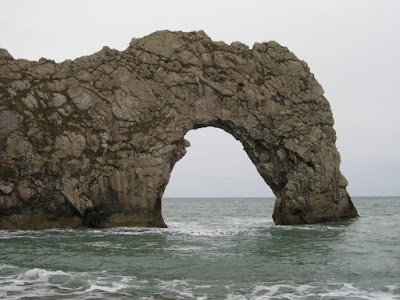 (Click photos to enlarge).
(Click photos to enlarge).I'm slightly ashamed to say that although I have worked in Oxford for over 20 years, I very rarely get out and about and visit its various places of interest. I think, like many others in Oxford, I tend to leave that to the tourists and end up missing out on what's there on my own doorstep.

I only visited the Oxford University Museum of Natural History for the first time last November, but I instantly fell in love with the place and wondered why on earth I'd never been before. I'm not going to give its whole history here, but to say that the museum came into being following a competition in 1854, when Deane and Woodward's design for the museum was selected, and then in 1860 the building was opened despite being unfinished in parts. (The museum sells a booklet entitled
Oxford University Museum: Its architecture and art for £2.50, and which will fill in all the historical details should you want them).

The architecture of this place is incredible. Upon entering the main court, one of the very first things you notice is how very light it is. Intriguingly the main court has a glass roof which is held aloft by a system of cast and wrought ironwork. The ironwork is decorated with various botanical ornamenation, so that you almost get the impression of being inside an iron jungle.

The stonework in the museum is pretty impressive too. Each of these pillars surrounding the court (pictured above) - which are to be found both around the court on the ground floor and on the first floor galleries - is made from a different British decorative rock whilst their capitals and corbels (the stonework immediately above and below each pillar) are each intricately carved with various flora and fauna.

Those who find taxidermy repellent might want to stay away as there are various stuffed animal exhibits here. Unlike the museums I remember from my childhood, visitors are actively encouraged to touch some of these stuffed animals. Small children in particular seem to love these exhibits. Where else could they get up close to a cheetah, or a badger or fox, and get to stroke its fur and see what it feels like to the touch? Several of these exhibits that we are invited to touch have labels in braille, so the museum should be commended for taking its blind visitors into consideration.

One of the more macabre exhibits features this pair of carrion crows feeding their young with a little fluffy yellow chick. But such is nature!

Another much more legendary bird, of which the museum is very proud, is the dodo. This particular example is usually referred to as the Oxford Dodo and famously appeared in Lewis Carrol's
Alice's Adventures in Wonderland. Supposedly, the head and foot of the dodo displayed here are the most complete remains of a single dodo anywhere in the world.

Here (above) we see the dodo again, but in a "slimline" version after research has suggested it wasn't as fat and clumsy as it has been previously portrayed.

This huge slab of sandstone caught my eye. It contains fossils of three different genera of trilobites, as well as several brittle stars. To give an idea of scale some of the larger trilobites here are each roughly the size of one of my hands (and I have reasonably large hands).

And of course there are dinosaurs in the museum. Plenty of them. As one of my favourite authors, Robert Rankin, would say: I think it's a tradition or an old charter or something.

This chap, a certain Mr Charles Darwin, is also present albeit in statue form as are a whole host of other famous scientists. Darwin's collection of crustacea, amassed from his expeditions on
The Beagle, is owned by the museum, and the
1860 evolution debate which discussed Darwin's
On The Origin of Species took place here.

As if you haven't gathered by now, I think this museum is absolutely fantastic, and I've not even mentioned the displays of fossils, minerals, the insects and arachnids (including a live tarantula) and very probably a whole lot more that I simply can't think of right now. The museum is very child-friendly, and it was great to see so many families out together for a visit. It doesn't cost anything to get in (although donations are welcome), so all in all I'd say the Oxford University Museum of Natural History is well worth a visit and brings together a wealth of natural history, art and architecture all under one roof.

(Casts of the footprints of the bipedal carnivorous dinosaure
Megalosaurus from 168 million year-old middle Jurassic limestones of Oxfordshire - on the museum's front lawn.)
See:
Oxford University Museum of Natural HistoryDate visited: 1 March 2009














































